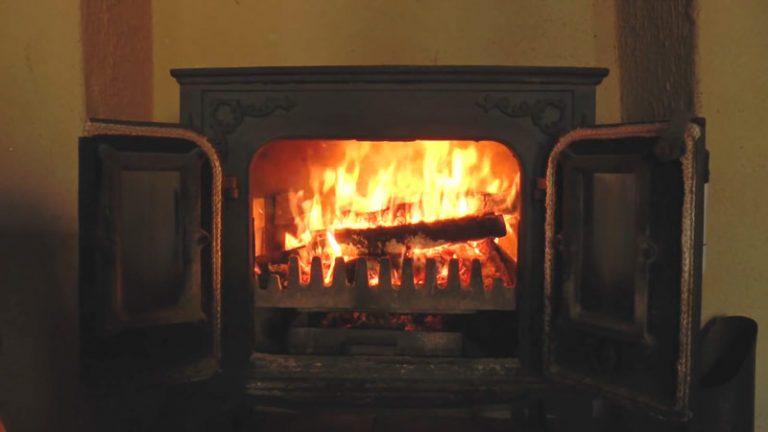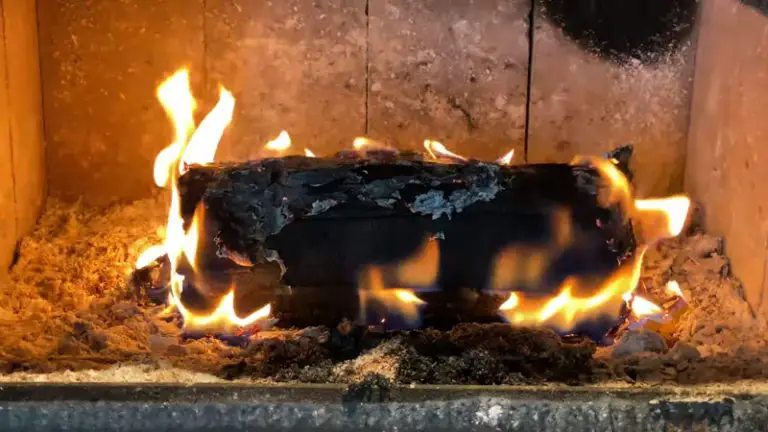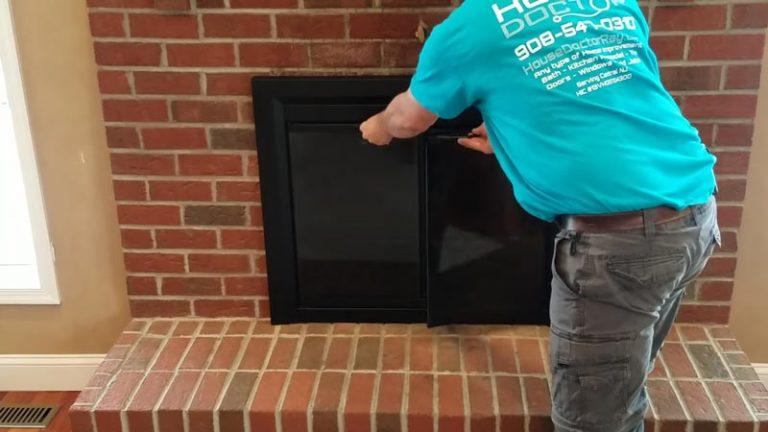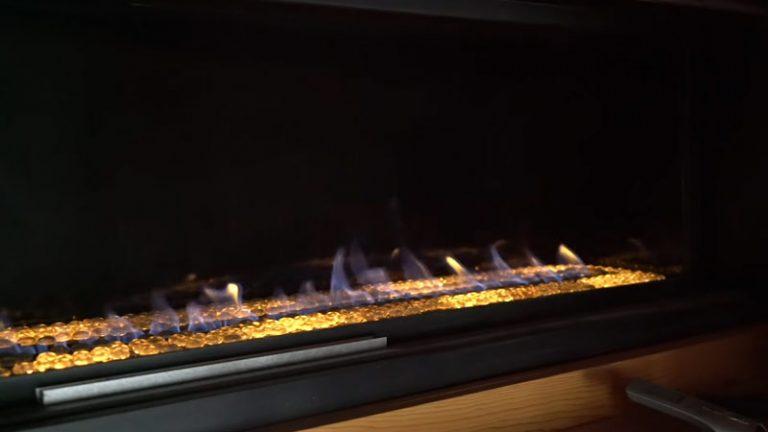Should I Leave Door Open On Wood Burning Stove
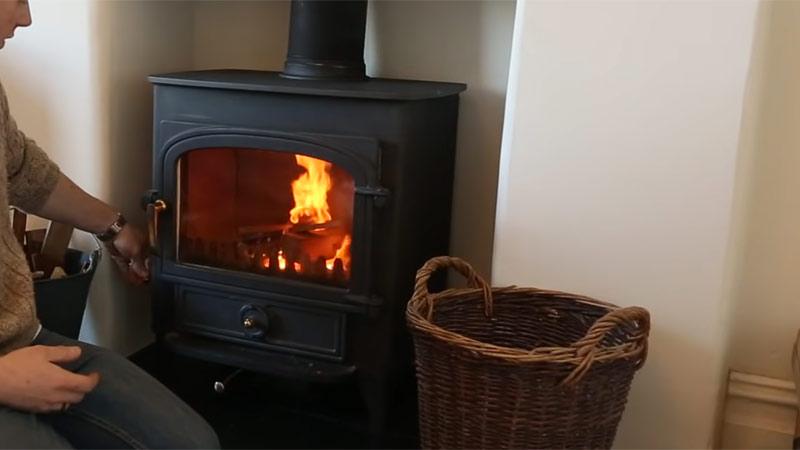
Keeping your stove tidy will help reduce the amount of smoke that comes out of the chimney. If you’re using your stove and find there’s too much smoke coming out of the chimney, close the door immediately to avoid a fire.
Cleaning your fireplace every once in a while can keep it looking great and prevent any unnecessary damage from happening. Firewood should be left far away from stoves as they are especially dangerous if not properly stored or disposed of correctly.
Smoke detectors play an important role in keeping everyone safe when it comes to fires – make sure you have one installed near your stove.
You'll Learn About
Should I Leave Door Open On Wood Burning Stove?
Opening the door to your stove when you’re not using it can prevent a fire from starting. Keep the chimney clean by regularly cleaning it and making sure there is no unused wood or kindling near the stove.
Close the door immediately if smoke starts coming out of the chimney – this will help avoid dangerous fumes in your home.
Close The Door When You’re Not Using It
Leaving the door open to your wood-burning stove is a safety precaution. If you’re not using the stove, it’s best practice to close the door so that heat doesn’t escape and ignite something else in your home.
A closed door will also help prevent soot from accumulating on the walls of your home, which can be harmful if inhaled. Closing or opening the door automatically adjusts how much air enters and leaves the oven. This makes sure that there is enough oxygen for combustion to take place properly and that noxious fumes are eliminated quickly.
Keep The Chimney Clear
Keep your chimney clean by regularly cleaning it. If using a wood-burning stove, leave the door open to allow for proper ventilation and avoid smoke build-up in the home.
A blocked or dirty chimney can cause poor heat distribution from the stove and could lead to serious health hazards. Cleaning your chimney on a regular basis will help ensure the safe operation of your wood burning stove, as well as improve indoor air quality in your home.
Make sure you have all the required safety gear before beginning any type of work around a wood-burning stove–even if it’s just sweeping out ashes.
No Unused Firewood Or Kindling
Keep an eye on the wood stove when it’s not in use to make sure there are no unused pieces of firewood or kindling nearby. If you notice any suspicious objects, take appropriate measures to keep people and pets safe.
Leaving the door open while the stove is off can help regulate heat and airflow within the appliance. Make sure that all flames are completely out before leaving the room. Otherwise, a buildup of smoke may result in a dangerous situation for yourself and your home mates/family members.
Always be aware of your surroundings when using this type of appliance.
Close the Door Immediately If Smoke Starts Coming Out
If you are using a wood burning stove, it is important to close the door immediately if smoke starts coming out of the chimney. The dirt and ash from the fire will accumulate on top of the stove in an area called the flue, which leads outside.
Closing the door quickly can prevent this mess from building up and making your home hazardous. Smoke detectors should be installed in all rooms near a wood burning stove for added safety precautions. Keep your eyes open while using a wood burning stove – flames can easily jump onto objects nearby. So always keep an eye on the flame.
When I close the door on my wood stove the fire goes out?
If you close the door on your wood stove, the fire can go out. This happens because when the air flow to the burning logs is cut off, they start to smolder and eventually flame up again.
The draft was not produced when you closed the door on your wood stove because there wasn’t enough airflow to sustain the fire. This can be due to a number of factors including a damaged damper, an open fireplace flue, or blocked chimney entries.
- Air wasn’t pulled into the fireplace because there wasn’t enough wind outside blowing through it. If this is the case, you will need to install a new fan for your wood stove and/or adjust your doors so that they are properly sealed against drafts from the outdoors.
- There is not enough air flow to sustain the fire if there isn’t any proper draft in place – this could be caused by either faulty installation work or obstructions such as large trees or walls near your chimney.
- When you left without closing up all of the vents on your wood stove, warm air escaped and didn’t replace cold air that would have entered from below (the Draft Window).
- To ensure reliable heat output throughout the winter months close all openings around ventilation windows with screens during cold weather periods and make sure ashes are clean before leaving for longer periods of time; otherwise build an ash dumpster next to the hearth.
- A Chimney needs at least 1 inch per 100 feet height above ground level in order for an adequate draft.
Why does my wood burner smoke when I open the door?
When you open the door to your wood burner, the air is drawn in and heated up. If the door isn’t closed properly, this influx of warm air can cause a fire. Airflow channels inside your wood burner can become damaged over time or from ash buildup, which can block airflow and potentially lead to a fire.
Make sure that the wood burner is always lit before using it by checking the fuel level and ensuring there are no obstructions in the chimney (like leaves). Finally – make sure you close the door properly when leaving your burning stove.
Can you leave flue open overnight?
If you’re burning wood, coal or other fuels in your fireplace, it’s important to keep the flue open. This way, the fire can escape and not damage your home.
Be sure to close the flue when you’re finished cooking so that smoke and heat don’t build up inside your house.
Make sure the chimney is clear of smoke before you leave your home this weekend. If there is still a lot of smoke in the chimney, it’s important to open the flue and let out all of the smoke. This will help to reduce CO levels inside your home and improve air quality overall.
If you’re smoking indoors and you stop smoking for at least 30 minutes, then it’s okay to reopen the flue so that heat can escape from your home. However, if there is still a lot of smoke coming from the flue after 30 minutes have passed, then close it again until conditions change.
When leaving your house this weekend, be aware of potential damage done by fire typically found on roofing tiles (eave drip), walls (fire-induced paint chips or bubbling), or siding (wood rot). Check these areas carefully before returning back to your home – if any problems are found, call a professional right away.
Keep an eye on CO levels inside your home throughout the day – if they start rising rapidly (>0 ppm/hour) or begin fluctuating wildly (>10 ppm/day), then it may be time to take steps to prevent further damage such as opening up the flue more often or replacing damaged components like insulation, etc.
Finally, remember not to build any fires outdoors this weekend – stay safe by staying within safe boundaries.
Does a wood stove burn hotter with the damper open or closed?
It depends on what you are trying to achieve with the open or closed damper. Most people prefer an open damper when they want a hotter fire, while others use a closed damper for more even heat distribution.
Damper Controls Amount of Smoke and Air Flow
The damper is a metal door that goes over the firebox in your wood stove. It’s designed to control how much smoke and air flow into the firebox, which affects how hot the stove will get. The “operating” mode on most wood stoves is one-fourth of the way open, which means that this door is closed off entirely. This setting provides more smoldering and less heat than if it were fully opened up.
The Smaller Opening
If you want a lot of smoky flames burning in your fireplace or woodstove, then you’ll need to keep your operating damper completely shut. However, if you’re looking for a little bit more warmth without all of those pesky embers flying out onto furniture or curtains – then opening up your damper just slightly will do the trick.
A smaller opening allows more oxygen into the firebox; this makes combustion happen faster and produces more heat as well (although it does result in less smoke).
Different Types of Wood Stoves
Wood stoves come in many different shapes and sizes – so what works best for one home may not be ideal for another. If you’re not sure whether or not an open or closed fuel burner will work best for your particular style of home heating system – consult with an expert before making any decisions.
To Recap
If the door is left open on a wood-burning stove, the heat will escape and cause your home to become too cold. It’s important to close the door when not in use to prevent this from happening.
Leaving the door open on a wood burning stove can increase heat output, but it also poses safety risks, such as sparks escaping or accidental burns. For most situations, it’s safer to keep the door closed and use the stove’s vents to control the burn rate. This ensures efficient heating while minimizing potential hazards.
If you’re using a wood stove, it’s worth learning about whether creosote logs are effective for chimney maintenance. Additionally, understanding what can dissolve creosote can help you keep your stove and chimney in top condition. For more tips, check out how many Duraflame logs to use for optimal performance.

